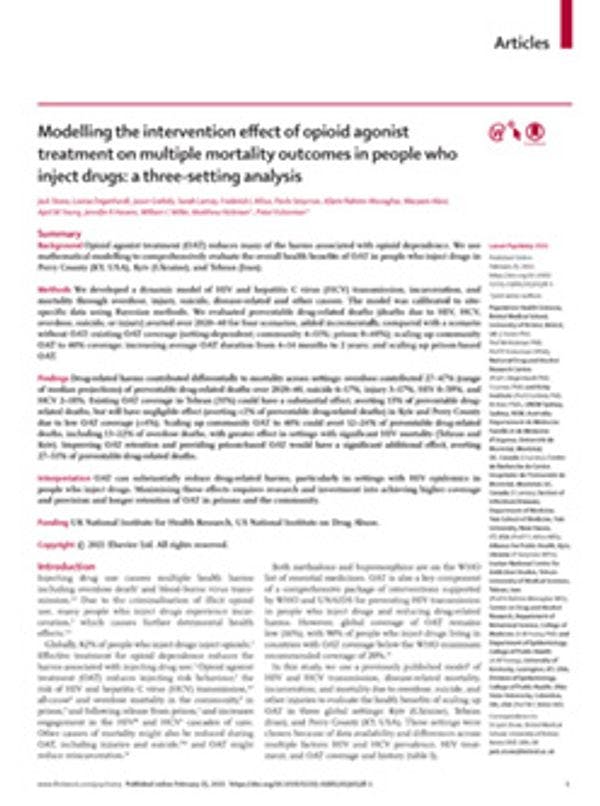Modelling the intervention effect of opioid agonist treatment on multiple mortality outcomes in people who inject drugs: a three-setting analysis
By Jack Stone et al. / The Lancet
Drug-related harms contributed differentially to mortality across settings: overdose contributed 27–47% (range of median projections) of preventable drug-related deaths over 2020–40, suicide 6–17%, injury 3–17%, HIV 0–59%, and HCV 2–18%. Existing OAT coverage in Tehran (31%) could have a substantial effect, averting 13% of preventable drug-related deaths, but will have negligible effect (averting <2% of preventable drug-related deaths) in Kyiv and Perry County due to low OAT coverage (<4%). Scaling up community OAT to 40% could avert 12–24% of preventable drug-related deaths, including 13–22% of overdose deaths, with greater effect in settings with significant HIV mortality (Tehran and Kyiv). Improving OAT retention and providing prison-based OAT would have a significant additional effect, averting 27–51% of preventable drug-related deaths. OAT can substantially reduce drug-related harms, particularly in settings with HIV epidemics in people who inject drugs. Maximising these effects requires research and investment into achieving higher coverage and provision and longer retention of OAT in prisons and the community.
Click here to read the full article (restricted access).
